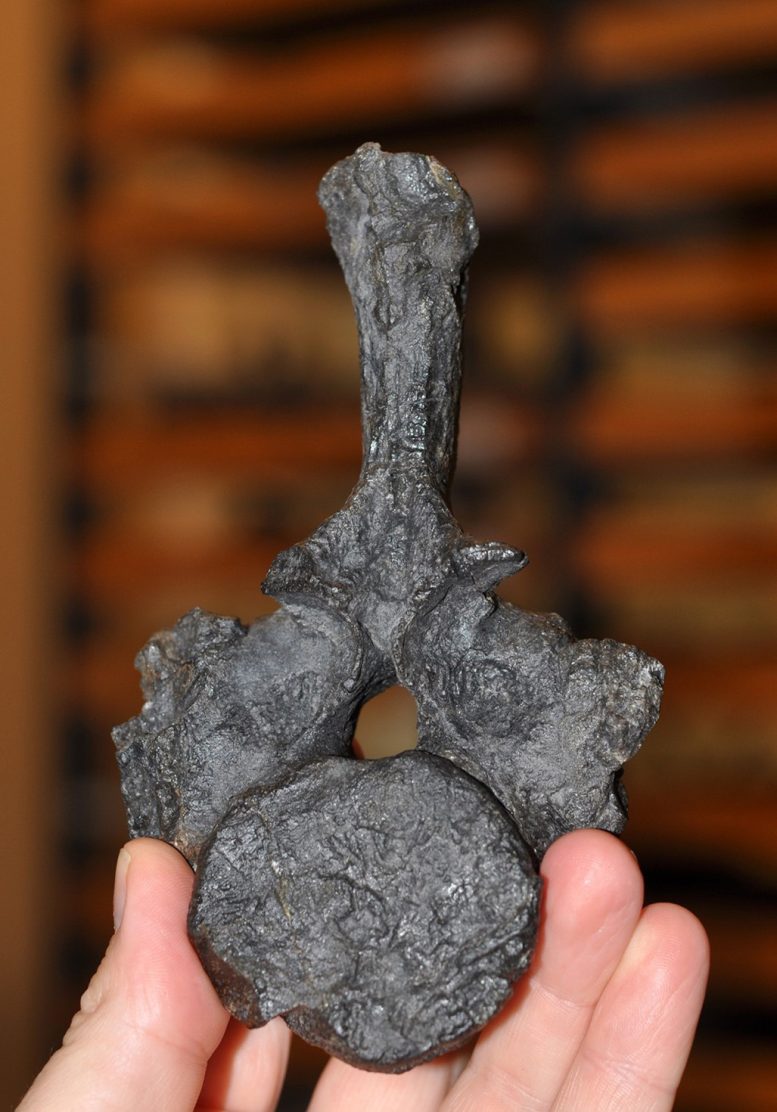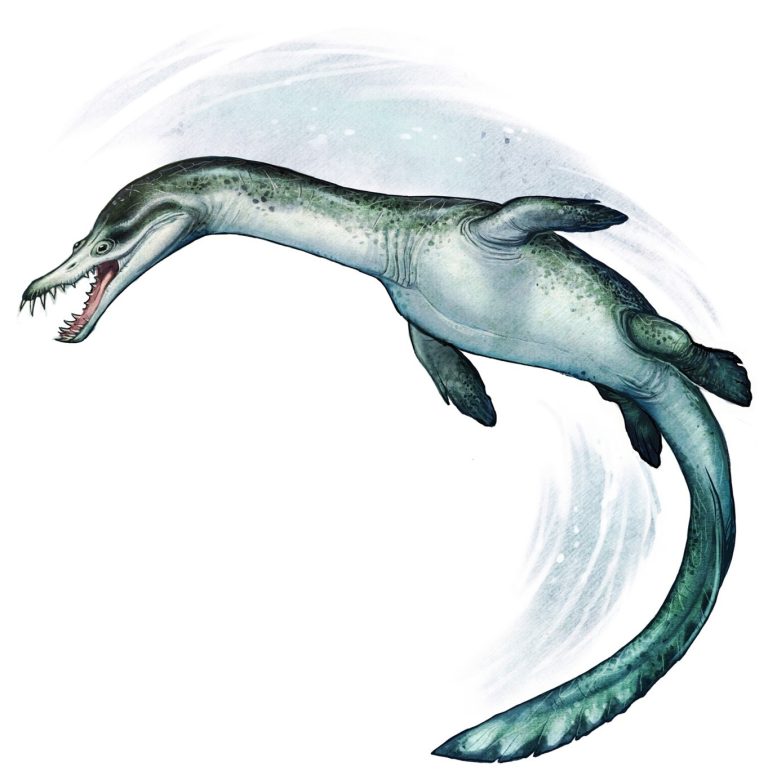
The oldest marine reptile fossil in the Southern Hemisphere was discovered in New Zealand
Reconstruction of the oldest marine reptiles of the Southern Hemisphere. Notosaurs swam along the ancient Antarctic coast of what is now New Zealand, about 246 million years ago. Credit: Stavros Chondromicalis
Researchers have discovered the oldest Southern Hemisphere Nothosaurus fossil in New Zealand, dating back 246 million years, providing new insights into the early marine adaptations and migrations of these ancient reptiles.
An international team of researchers has discovered the oldest marine reptile fossil in the Southern Hemisphere: a Notosaurus vertebra on the South Island of New Zealand. New Zealand dates back 246 million years, to the dawn of the age of dinosaurs, and is located along the Antarctic coast of the massive ocean known as Panthelassa.
Reptiles first invaded the seas after a catastrophic mass extinction that devastated marine ecosystems and paved the way for the dawn of the Age of Dinosaurs approximately 252 million years ago. Evidence of this evolutionary stage has been found only in a few places in the world: on the Arctic island of Spitsbergen, in northwestern North America, and in southwestern China. Although represented by a single vertebra excavated from a rock at the bottom of a river at the foot of Mount Harbor on New Zealand's South Island, this discovery sheds new light on a previously unknown record of early marine reptiles in the Southern Hemisphere. .

The original fossil of a Notosaurus vertebra from New Zealand. The oldest marine reptile in the Southern Hemisphere. Credit: Benjamin Kerr
Dominance of sauropterygians
Reptiles ruled the seas for millions of years before dinosaurs dominated the land. The most geologically diverse and oldest group was the Sauropterygia, with an evolutionary history extending back over 180 million years. This group included long-necked plesiosaurs, which resembled the popular image of the Loch Ness Monster. Notosaurs were the distant ancestors of plesiosaurs. They can reach seven meters in length and swim using four paddle-like limbs. Notosaurs had a flattened skull with a network of fine conical teeth that were used to catch fish and squid.
Notosaurus New Zealand was discovered during a geological survey in 1978, but its importance was not fully recognized until paleontologists from Sweden, Norway, New Zealand, Australia, and East Timor pooled their expertise to examine and analyze the vertebra and other associated fossils.

Reconstruction of a New Zealand nothosaurus. The oldest marine reptile in the Southern Hemisphere. Credit: Johan Egerkernes
“The nothosaur discovered in New Zealand is more than 40 million years older than the oldest Sauropterygian fossils known from the Southern Hemisphere. “We have shown that these ancient marine reptiles lived in a shallow coastal environment,” says lead author of the study, Dr. Benjamin Kerr, from the Museum of Evolution at Uppsala University. teeming with marine creatures in what was then known as the Antarctic Circle.”

Dr Benjamin Kerr, Curator of Vertebrate Paleontology and Paleontology Researcher at the Museum of Evolution at Uppsala University. Credit: David Naylor
The oldest notosaur fossils are about 248 million years old and were discovered along the low-latitude boreal paleobelt that extends from the extreme northeastern to the northwestern edges of the Panthalassa superocean. The origin, distribution, and time when nothosaurs arrived in these remote regions are still debated. Some theories suggest that they either migrated along Arctic coasts, swam inland seaways, or used currents to cross the Panthalassa superocean.
A new Notosaurus fossil in New Zealand has turned these long-standing assumptions on their heads.
“Using a time-calibrated evolutionary model of the global distribution of sauropterygia, we show that notosaurs arose near the equator, then spread rapidly northward and southward at the same time as complex marine ecosystems evolved after the catastrophic mass extinction that marked the beginning of the Ice Age,” says Kerr. From the age of dinosaurs.
“The beginning of the Age of Dinosaurs was marked by extreme global warming, which allowed these marine reptiles to thrive in Antarctica. It also suggests that the ancient polar regions were likely a route for the first global migrations, similar to the epic trans-oceanic voyages undertaken by whales today,” Kerr says. “There is no doubt that there are other fossil remains of long-extinct sea monsters waiting to be discovered in New Zealand and elsewhere in the Southern Hemisphere.”
A New Zealand nothosaur fossil is preserved in the GNS Science New Zealand National Paleontological Collection.

“Reader. Travel maven. Student. Passionate tv junkie. Internet ninja. Twitter advocate. Web nerd. Bacon buff.”
